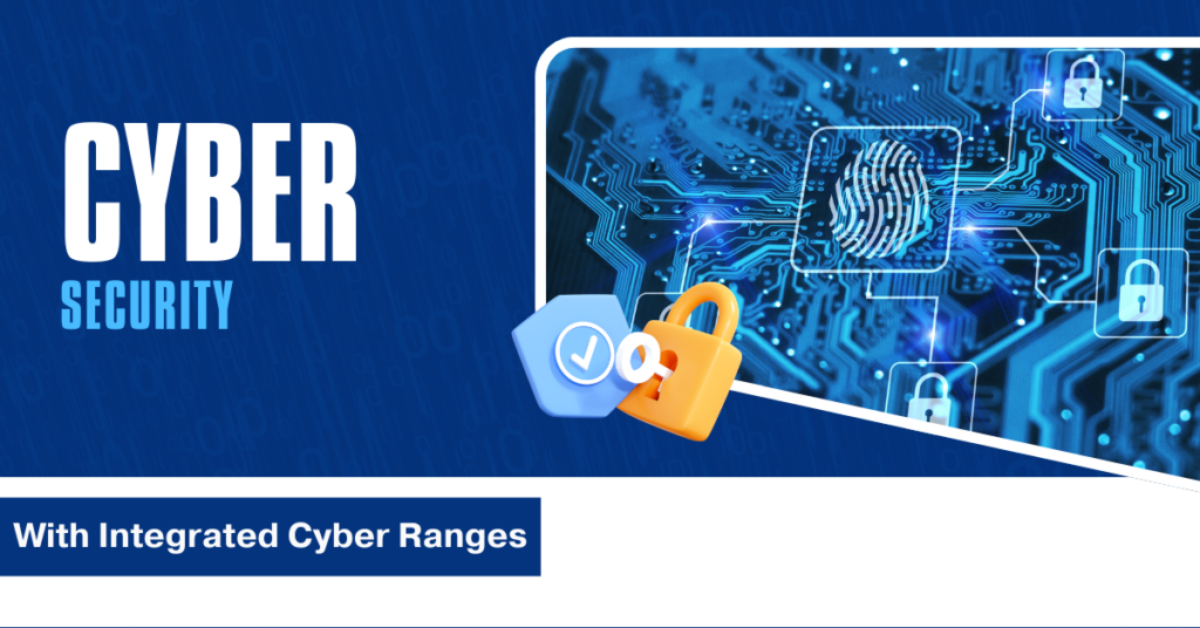Integrating Cyber Ranges into Your Cybersecurity Strategy
In today’s digital world, cybersecurity is more important than ever. As businesses rely on technology, they also face many threats. Cyber attacks can come from various sources, including hackers, malware, and even insider threats. To protect against these dangers, organizations must have a strong cybersecurity strategy. One effective way to enhance this strategy is by integrating cyber ranges.
What Are Cyber Ranges?
Cyber ranges are virtual environments where organizations can practice for cyber attacks. They offer a safe space for teams to test skills, technologies, and plans. Teams can engage in realistic scenarios without risking real systems or data. This practice is key to building confidence and skill in addressing cyber threats.
The Importance of Cyber Ranges
Cyber ranges are key to cybersecurity strategies. They allow staff to train in responding to attacks safely. This practice helps them learn about attackers’ methods. With this knowledge, teams can handle real incidents better.
Cyber ranges let organizations test their systems and defenses. By simulating attacks, they can find weaknesses. This also shows how systems perform under stress and where to improve. Such proactive measures help stay ahead of threats.
Cyber ranges boost teamwork and communication. In simulations, team members learn to share information and coordinate during incidents. This collaboration is key for responding quickly and effectively to real attacks.
Key Benefits of Integrating Cyber Ranges
Improved Skills Development
Cyber ranges offer a key benefit: skill development. Cybersecurity evolves quickly, with new threats daily. Professionals must update their skills constantly. Platforms like SimSpace create spaces for ongoing learning. Teams can practice in areas like incident response, threat hunting, or penetration testing.
Professionals can sharpen their skills and stay updated in a cyber range. This ongoing training is vital for a skilled workforce.
Enhanced Incident Response
Fast incident response is key to reducing cyber attack damage. Tools like allow teams to practice in realistic scenarios. They can simulate ransomware, phishing attacks, and more, testing strategies under pressure. These exercises reveal weaknesses, check communication, and ensure timely responses. Practical training helps improve plans, ensuring teams are ready for real attacks.
Risk Assessment and Management
Adding cyber ranges to a cybersecurity plan helps with risk assessment and management. Organizations can simulate attacks to evaluate risk and identify vulnerabilities.
For example, a team can simulate a DDoS attack to test its defenses. Platforms like SimSpace then measure response times and recovery. This offers insights to improve risk management and resource use.
Technology Evaluation
Today, cyber ranges are crucial for testing security technologies. They let teams safely simulate attacks and assess new tools against emerging threats. Businesses can integrate potential solutions, like intrusion detection systems, into platforms such as SimSpace. There, they can assess effectiveness against various attack vectors. This approach helps organizations make decisions based on data. It allows them to test new protections in cyber ranges. This way, companies gain insights before making expensive security investments.
Enhanced Collaboration
Cybersecurity isn’t just for the IT department. It needs teamwork across the organization. Cyber ranges make this possible. They allow teams from different departments to collaborate in a shared space. For instance, during a simulation, IT staff, legal teams, and management can all take part. This collaboration helps everyone understand their roles and work together. As a result, it improves cybersecurity.
Implementing Cyber Ranges in Your Strategy
Step 1: Define Your Goals
Before adding a cyber range to your cybersecurity plan, first, define your goals. What do you aim to achieve? Is it training, assessing risks, or evaluating technology? Clear goals will steer your setup and help measure success.
Step 2: Choose the Right Cyber Range
There are many types of cyber ranges, including commercial and custom options. When choosing one, consider your organization’s needs, budget, and technical skills. Some ranges offer specific features, such as customizable scenarios or analytics tools. Choose a range that aligns with your goals and resources.
Step 3: Develop Realistic Scenarios
To maximize the benefits of a cyber range, it’s crucial to develop realistic scenarios. These scenarios should reflect the types of threats your organization is likely to face. Work with your cybersecurity team. Create exercises that challenge their skills and promote learning.
For instance, if your organization fears phishing attacks, create a mock phishing campaign. This method ensures your team is ready for actual threats.
Step 4: Foster a Culture of Learning
Integrating cyber ranges into your cybersecurity strategy is not a one-time event. It requires ongoing commitment and a culture of learning. Encourage your team to participate regularly in cyber range exercises. Provide opportunities for feedback and discussion after each session.
Building a culture that values learning keeps your team motivated and engaged. It also develops a skilled workforce ready for evolving cyber threats.
Step 5: Measure Success and Adjust
Finally, it’s important to measure the success of your cyber range integration. Use metrics to assess your training and response plans. For example, monitor improvements in response times or the vulnerabilities found in simulations.
Based on this data, adjust your approach as needed. Continuous improvement is key to maintaining an effective cybersecurity strategy. As threats evolve, so must your training and preparation.
The Role of SimSpace in Cyber Range Integration
SimSpace is a key platform for organizations’ cyber range needs. It offers a cyber range to simulate realistic cyber-attacks. This platform is aimed at training and developing cybersecurity teams.
SimSpace enables organizations to customize training scenarios to their needs. It also provides analytics for teams to assess their performance. This data is key in identifying improvement areas and ensuring preparedness for real-world threats.
Conclusion
Adding cyber ranges to your cybersecurity plan boosts your defenses. They offer a safe space for training, testing, and teamwork, creating a skilled workforce ready for digital challenges.
Platforms like SimSpace enable organizations to enhance cybersecurity and anticipate threats. With the rise in cyber attacks, investing in cyber ranges is vital for protecting digital assets.



